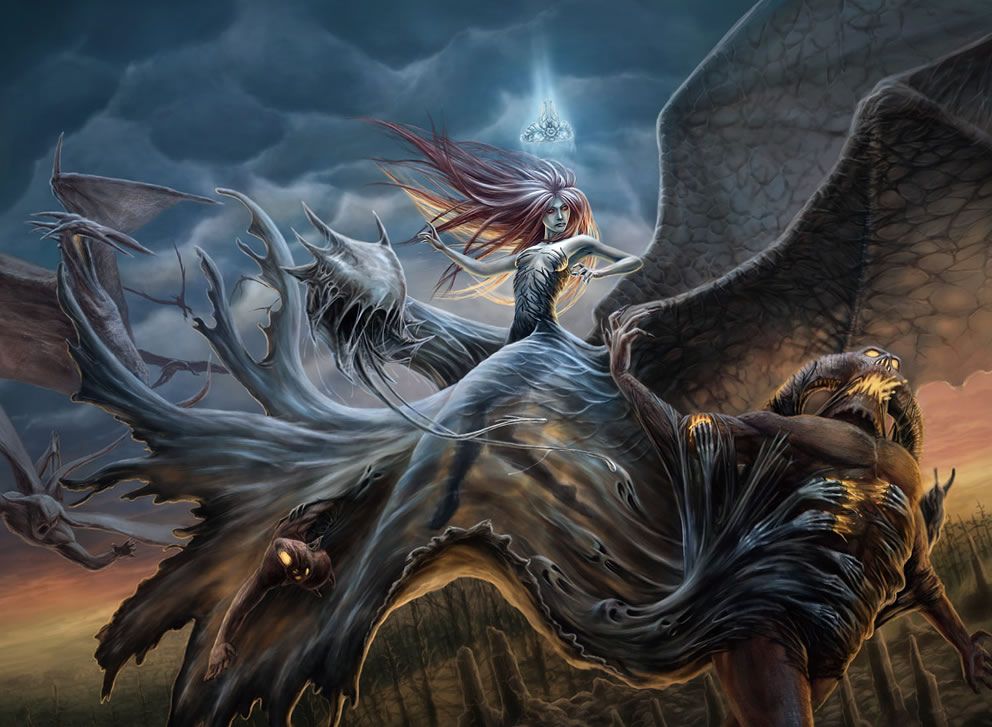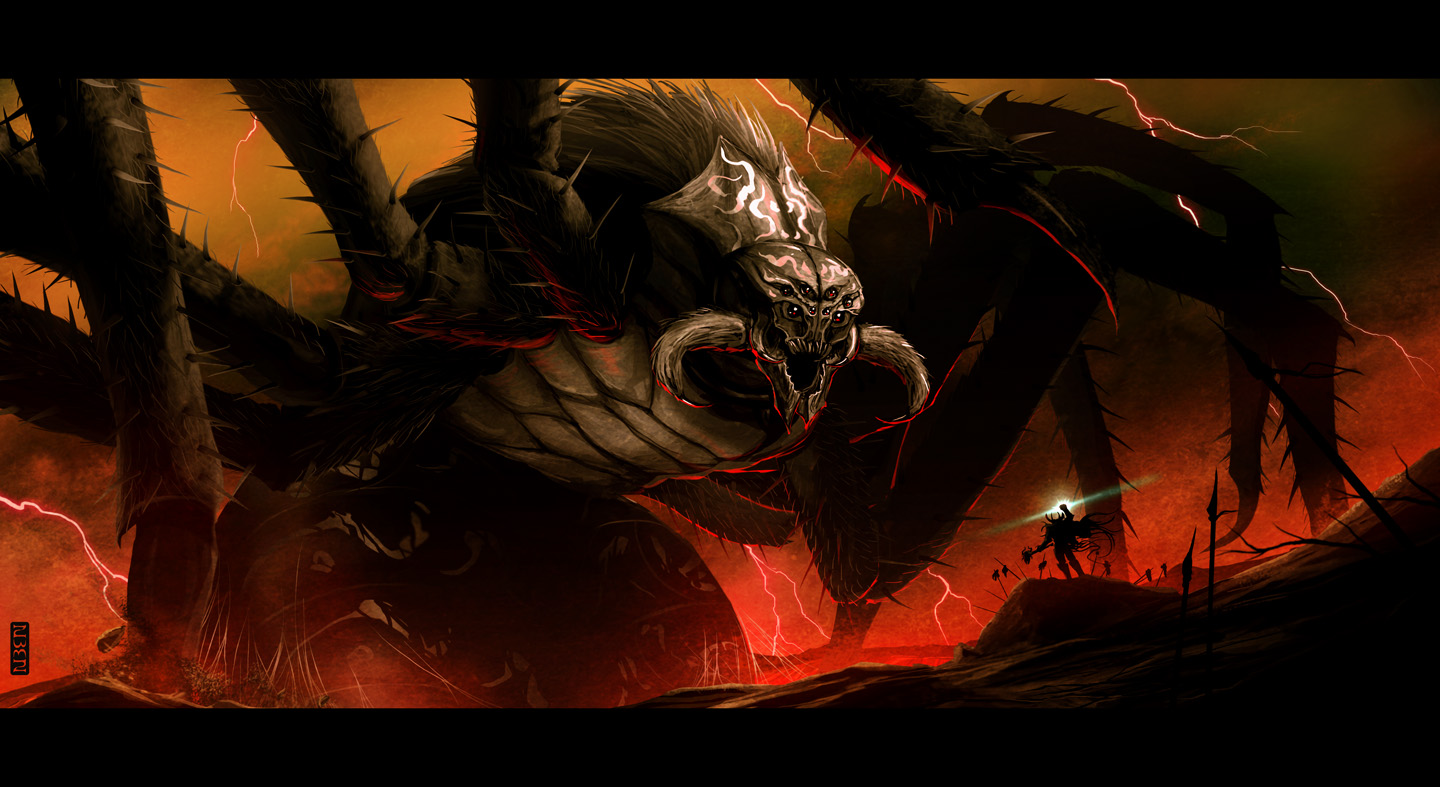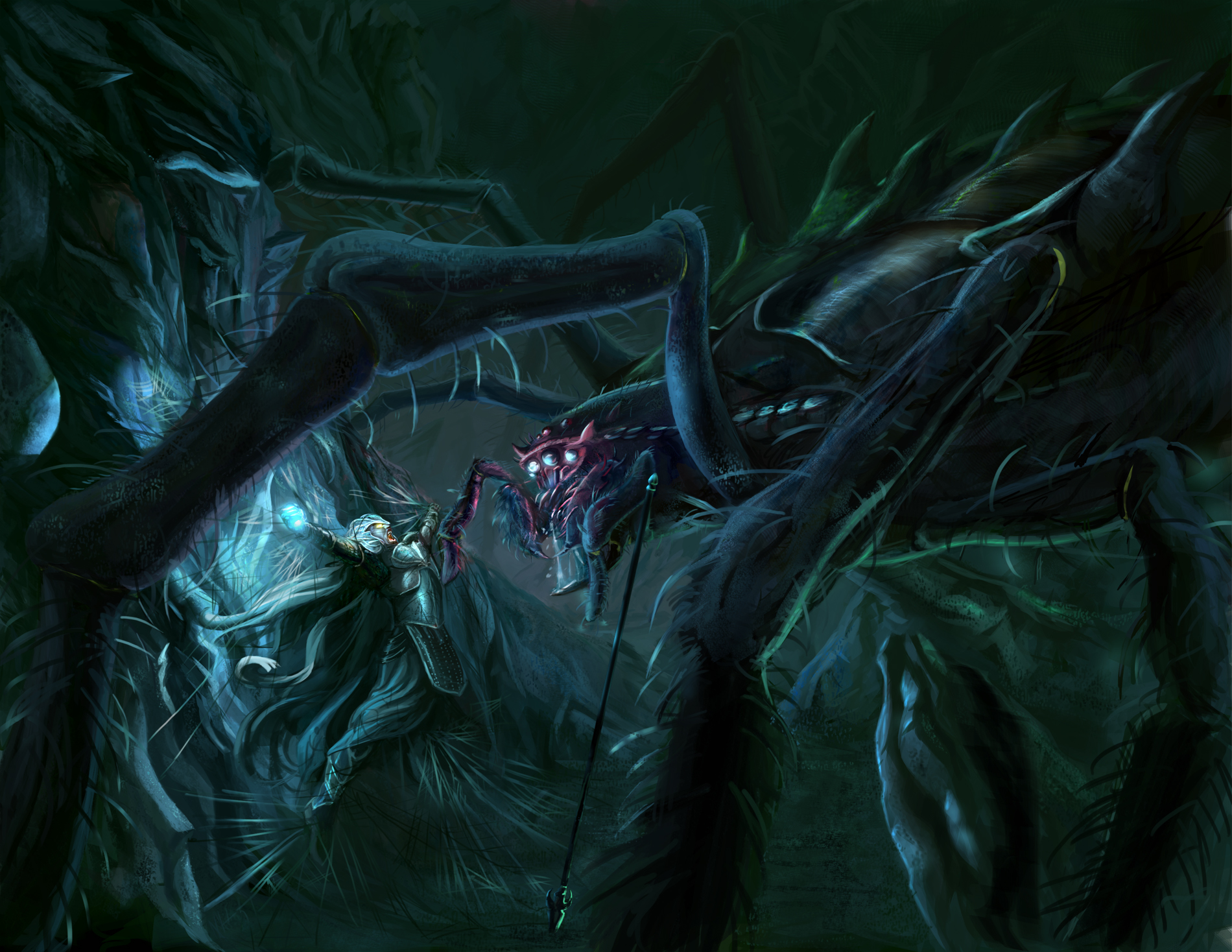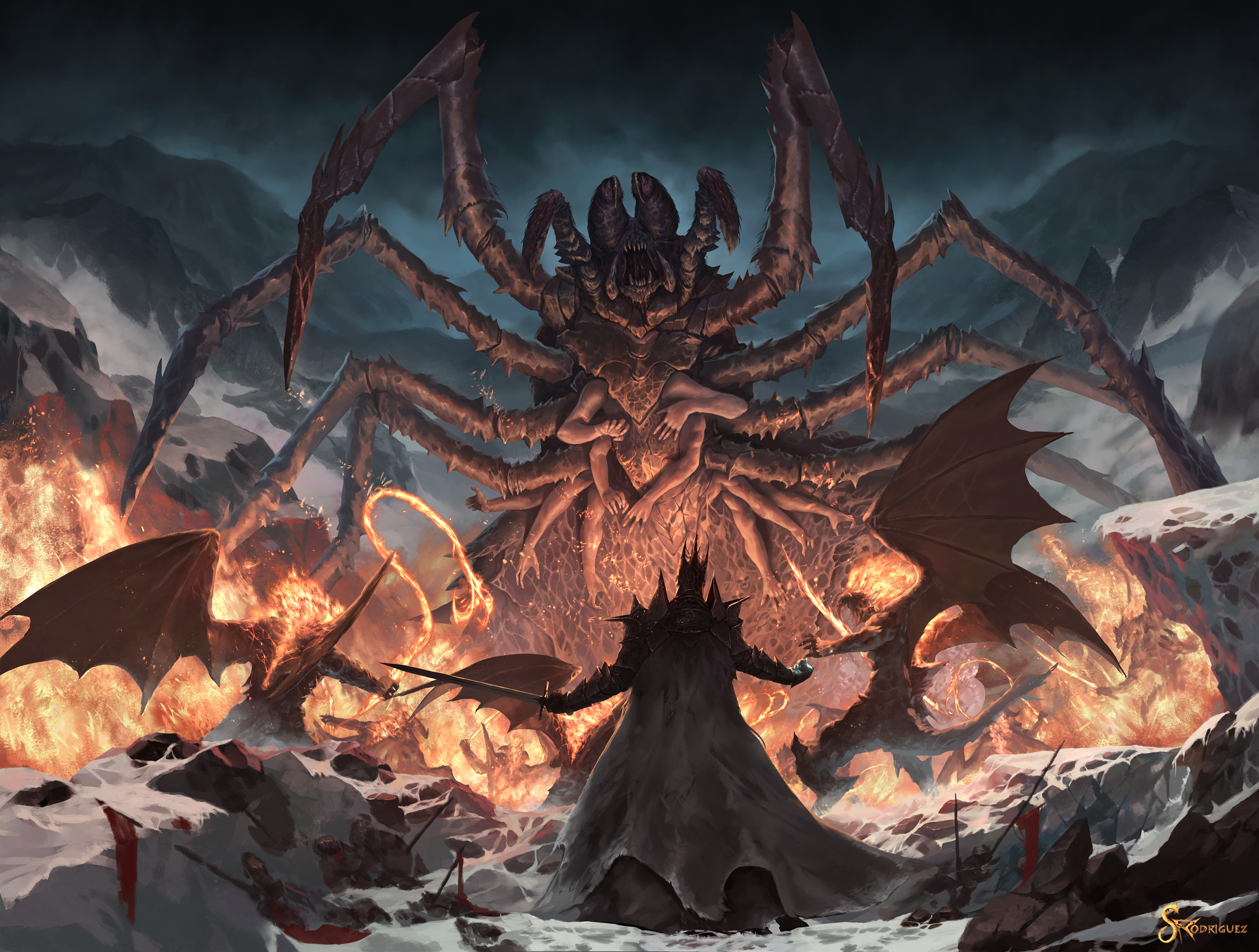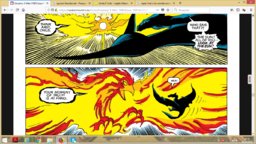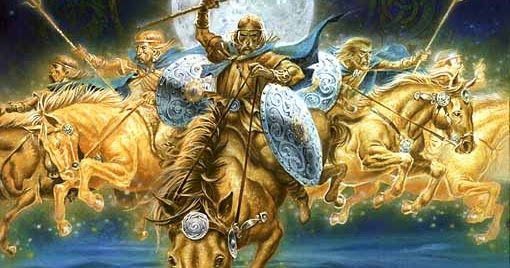Shall We Dance?: Legend’s Lily and the Subversion of the Damsel Stereotype
by Genevieve Valentine
Legend has long been the whipping boy of fantasy moviemakers and fans alike. The criticism comes not entirely without cause—any fantasy movie with Tom Cruise in it is already on notice, and the production design suffers from an overabundance of sincerity and fake flower petals. But Ridley Scott’s vision for
Legend was a dark and subversive take on the archetypal fairy tale princess, as lushly appointed as a Cocteau film, and in the fantasy spectrum, it has less in common with Disney’s heroines than with the Cinderella whose sisters sliced off their heels and toes to fit into the glass slipper.
The film has the feel of a story you heard as a child, and even if this story is new, the elements are old standards: the heroic wood-dweller who fights his way through the briars to win his princess; the innocent princess enchanted by the darkness; and Darkness himself, a no-bones-about-it villain who’s Satan’s own son. Jack takes his beloved Lily into the forest to see the pair of unicorns that dwell in it. Lily, assuming that her pure heart will keep the animals safe, touches one—which is shot by a demon and butchered for its horn. As the world above turns to winter, Lily and the world’s last unicorn are kidnapped, and Jack must summon the magic folk of the forest to steal the unicorn—and Lily—back from the underworld before the world freezes to death.
Make no mistake, the movie’s first act is a game of Archetype Bingo. However, what keeps
Legend from being paint-by-numbers and gives a Gothic cast to the sun-and-pollen-drenched first act is the way Scott gives Lily a narrative arc that stands apart from the hero’s quest. Jack, the brave child of the wood, is a good-hearted boy aided by the fairy folk and able to resist all temptation. It’s Lily who takes the journey in this film, though like her folk-tale counterparts (most obviously Persephone and the young queen from “East of the Sun, West of the Moon,” whose innocent mistakes set the stage for their growth and redemption), Lily does not escape suffering. It’s a neat subversion of the damsel trope that pervades modern fantasy movies, and it sets
Legend in the realm of the modern fantasy film: movies that examine, rather than perpetuate, old myths.
The movie’s most pivotal scene is the seduction of Lily in the hall of Darkness. Scott makes no bones about what Darkness intends to do with the captive girl; she is locked in a chamber fitted up with the world’s most foreboding dinner for two, given jewels, and bewitched by a possessed black gown that tempts her into a dance—and into the dress. Scott leaves the scene ambiguous; is the dress itself bewitched, or has Lily simply given in to the lure of the beautiful dark? Another thematic question arises: the moment one ceases to fight evil, has one to some degree given in? (Interestingly, it’s one he chooses not to answer, opting instead for a much more ham-fisted morality play at movie’s end.)
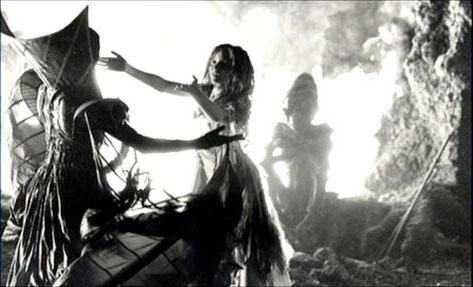
As Darkness emerges from a mirror in all his monstrous bulk to woo his intended bride, Lily fearfully resists his advances, every inch the protesting innocent. However, as Darkness makes clear that he is not looking for a meal, but a wife, she cunningly tempers her responses to him, going so far as to deliberately provoke him and then to laugh coyly when he rages. Darkness is confused, aroused, and—when she asks if she may kill the unicorn as a wedding present—nearly joyful.
Tim Curry and Mia Sara’s tête-à-tête lends a dangerous, sensual edge to what could have been a stilted seduction; Curry manages to telegraph his attraction to (and even fondness for) Lily through three inches of mask, and Sara pitches her voice stronger and lower with every line, changing in a single scene from an ingénue to a femme fatale. The audience takes Darkness’s love on faith; with such an alluring object, how could he resist?
Jack, relegated to the active background, assembles a tunnel of mirrors that will bring light into the caves and defeat Darkness (an interesting parallel to the demon-glass through which Darkness travels—in
Legend, no object is inherently evil or good, except as it’s used). Jack’s actions are Noble Hero 101: surrounding himself with allies, navigating tests, devising a plan, rescuing the princess. But Scott is twisting, not replaying, the fairy tale, and so it’s Lily we follow into the dark, and her fate for which we worry. Jack will succeed because of his inherent goodness; Lily has confronted her dark side, and may or may not be changed beyond redemption.
This dark twist carries into the final confrontation, when a concealed Jack and the wood-nymph Gump wait to see if Lily will go through with her strike and cut off the unicorn’s horn. Jack is confident that she’s not as evil as she looks; he closes his eyes and whispers, “I trust you, Lily.” Tellingly, the wood-sprite Gump, whose eyes are open, lifts his bow to shoot her. Of course, Lily (never really as evil as she seemed) frees the unicorn with the axe-stroke, and in the ensuing melee all is forgotten, but Gump’s drawn bow is Scott’s tantalizing hint to the viewer that Lily really is no longer the innocent girl Jack knew.
Scott’s thematic point in making
Legend is that a little bit of evil can be a very good thing, even a necessary thing. For those who might have missed the message, Tim Curry helpfully screams it just as he’s sucked into the abyss. Despite the falsely-bright ending, it’s obvious in the movie’s last few minutes that without this hardship to struggle against, our heroes really were the jam-boned milksops the demons mocked them for being. The Lily who outsmarted the son of the Devil will be a much better queen than the Lily who thought that no harm could come to her if her intentions were pure.
It’s unfortunate that, because of filming difficulties and test audiences who wanted a happy ending, none of the rewards of Lily’s journey reach the petal-soaked final minutes of implied connubial bliss. The director’s cut ameliorates this by sending Lily home to the palace and leaving Jack among his true kind, the fairy folk; it’s a much more ambiguous and satisfying ending, but it still falls short of what it could be—a fairy tale, all grown up.
Legend suffers from an overabundance of glitter, stilted editing in its theatrical release, and one of Tom Cruise’s more wooden performances, which is saying something. However, in the end none of that takes away from a genuinely dark and beautiful tale about good against evil, where good conquers not by rejecting evil, but by overcoming it—a rare trick in fantasy filmmaking, and one that makes
Legend a more complicated fairy tale than it seems.
(Turns out I’m not the only person who thinks this; some kind soul on YouTube has put together a great series of clips. Enjoy!)
Genevieve Valentine is a writer in New York; her fiction has appeared or is forthcoming in
Strange Horizons,
Farrago’s Wainscot,
Diet Soap,
Journal of Mythic Arts, and
Fantasy. Her appetite for bad movies is insatiable, a tragedy she tracks on her blog. She is currently working on a formula to evaluate the awfulness of any given film, a scale that will be measured in Julians.















 ) de A Lenda-Legend?
) de A Lenda-Legend?
